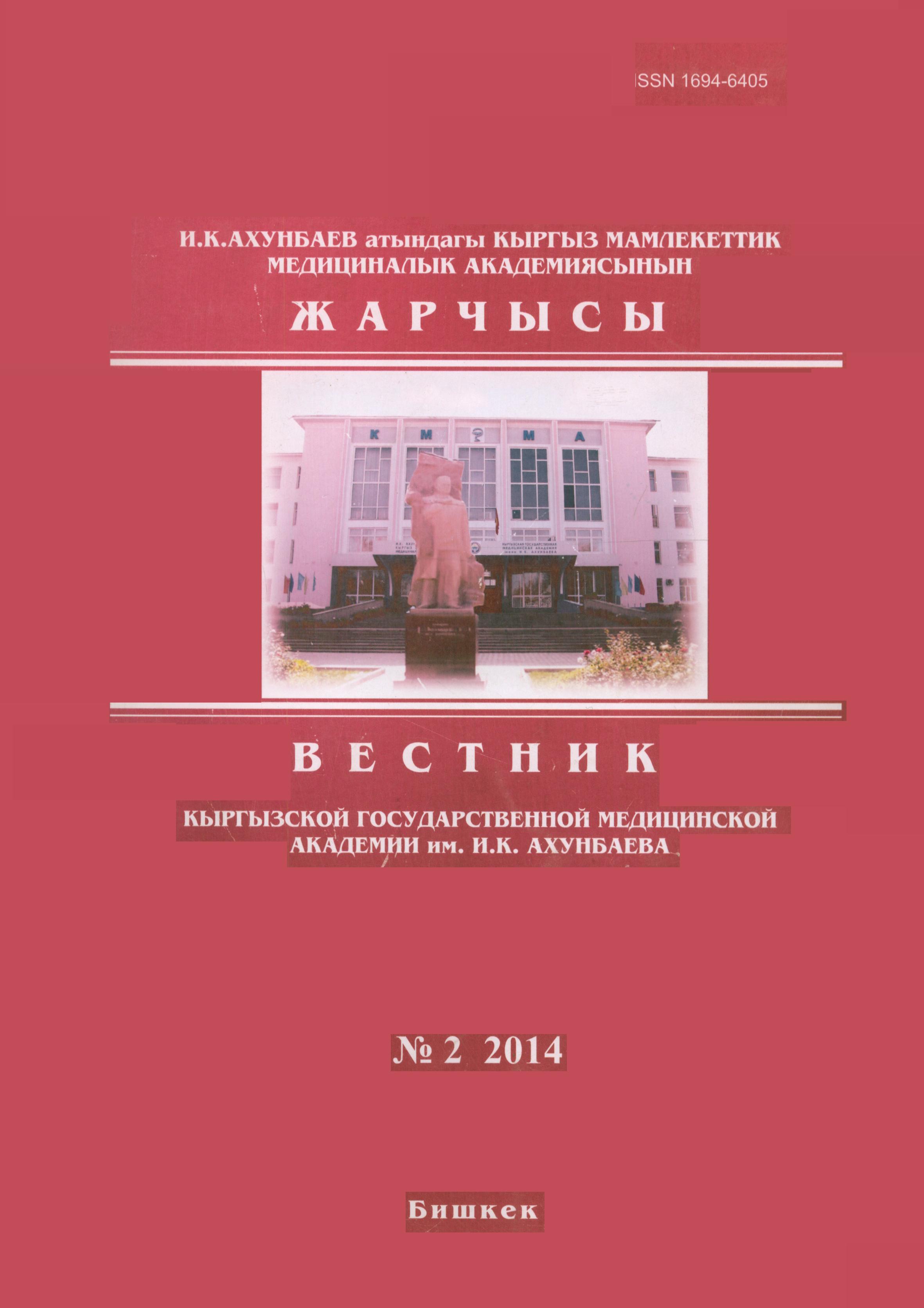ПАТОГЕНЕТИЧЕСКИЙ ПОДХОД К ЛЕЧЕНИЮ НАЧАЛЬНЫХ СТАДИЙ ЦЕРЕБРО-ВАСКУЛЯРНОЙ ПАТОЛОГИИ
Аннотация
Церебро-васкулярная патология является одной из основных причин смертности и основной причиной инвалидизации населения как на всей территории бывшего Советского Союза так и во всем мире. Особенно актуальным является поиск новых мишеней для патогенетического лечения начальных стадий церебро-васкулярной недостаточности. Влияние на функцию эндотелия является перспективным с точки зрения предотвращения и замедления прогрессирования сосудистого поражения на самых ранних стадиях процесса. Регуляция процесса апоптоза может иметь положительное влияние на процессы адаптации к действию сосудистых факторов риска.
Ключевые слова:
начальные стадии церебро-васкулярной недостаточности, сосудо-двигательная функция эндотелия, апоптоз.Библиографические ссылки
1. Биленко М.В., Ладыкина М.В., Федосова С.В., Сравнительная оценка цитотоксическго эффекта перекиси водорода и фактора некроза опухолей альфа на неишемизированные и ишемизированные эндотелиальные клетки // Вопр. мед. химии. — 1999. — №5. — С. 2–7.
2. Программированная клеточная гибель / Под ред. В. С. Новикова. — СПб., 1996
3. Anderson, T. J. (1999) Assessment and treatment of endothelial dysfunction in humans. J. Am. Coll. Cardiol. 34: 631–638.
4. Arginine and Arginase: Endothelial NO Synthase Double Crossed? Vanhoutte Circ Res.2008; 102: 866-868.
5. Böger RH, Bode- Böger SM, Mugge A, Kienke S, Brandes R, et al. 1995. Supplementation of hypercholesterolaemic rabbits with L-arginine reduces the vascular release of superoxide anions and restores NO production. Atherosclerosis 117:273–84.
6. Böger RH, Bode- Böger SM, Szuba A, Tangphao O, Tsao PS, et al. 1998. ADMA: a novel risk factor for endothelial dysfunction. Its role in hypercholesterolemia. Circulation 98:1842–47.
7. Brune B, Messmer UK, Sandau K. The role of nitric oxide in cell injury. Toxicol Lett 1995;82-83:233-237.
8. Brunner H, Cockcroft JR, Deanfield J, et al. Endothelial function and dysfunction. Part II: Association with cardiovascular risk factors and diseases. A statement by the Working Group on Endothelins and Endothelial Factors of the European Society of Hypertension. J Hypertens 2005;23(2):233–246.
9. Cai H, Harrison DG. Endothelial dysfunction in cardiovascular diseases: the role of oxidant stress. Circ Res 2000;87:840–4.
10. Celermajer D. Endothelial function: does it matter? Is it reversible? J Am Coll Cardiol. 1997;30:325–333.№ Vane J, Anggard E, Botting R. Regulatory function of the vascular endothelium. N Engl J Med. 1990;323:27–36.
11. Celermajer, D.S., K.E. Sorensen, D. Georgakopoulos, C. Bull, O. Thomas, J. Robinson, and J.E. Deanfield. 1993. Cigarette smoking is associated with dose-related and potentially reversible impairment of endothelium-dependent dilation in healthy young adults. Circulation. 88:2149–2155.
12. Cooke, J. P. (2000) The endothelium: a new target for therapy. Vasc. Med. 5: 49–53.
13. Creager, M. A., Cooke, J. P., Mendelsohn, M. E., Gallagher, S. J., Coleman, S. M., Loscalzo, J. & Dzau, V. J. (1990) Impaired vasodilation of forearm resistance vessels in hypercholesterolemic humans. J. Clin. Invest. 86:228–234.
14. Deanfield J, Donald A, Ferri C, et al. Endothelial function and dysfunction. Part I: Methodological issues for assessment in the different vascular beds: a statement by the Working Group on Endothelin and Endothelial Factors of the European Society of Hypertension. J Hypertens 2005;23(1):7–17.
15. Deanfield JE, Halcox JP, Rabelink TJ. Endothelial function and dysfunction: testing and clinical relevance. Circulation 2007;115(10):1285–1295.
16. Greager M.A. L-arginin in endothelial and vascular health // J Nutr.-Supp. 1997.-10.-P. 2880-2887.
17. Heffernan KS, Vieira VJ, Valentine RJ. Microvascular function and ageing L-arginine, tetrahydrobiopterin and the search for the fountain of vascular youth. J Physiol 2008;586(8):2041–2042.
18. Heitzer T, Schlinzig T, Krohn K, et al. Endothelial dysfunction, oxidative stress, and risk of cardiovascular events in patients with coronary artery disease. Circulation. 2001;104:2673–2678.
19. Huggins G.S, Pasternak RC, Alpert NM, et al. Effect of short term treatment of hyperlipidemia on coronary vasodilator function and myocardial perfusion in regions having substantial impairment of baseline dilator reverse. Circulation 1998;98:1291–6.
20. Huk I,Nanobashvili J,Neumayer C, Punz A, M¨ uller M, et al. 1997. L-arginine treatment alters the kinetics of nitric oxide and superoxide release and reduces ischemia/reperfusion injury in skeletal muscle. Circulation 96:667–75.
21. Ignarro, L. J., Buga, G. M., Wood, K. S., Byrns, R. E. & Chaudhuri, G. (1987) Endothelium-derived relaxing factor produced and released from artery and vein is nitric oxide. Proc. Natl. Acad. Sci. U.S.A. 84: 9265–9269.
22. Kearney-Schwartz A, Rossignol P, Bracard S, et al. Vascular structure and function is correlated to cognitive performance and white matter hyperintensities in older hypertensive patients with subjective memory complaints. Stroke 2009;40(4):1229–1236.
23. Kuvin JT, Karas RH. Clinical utility of endothelial function testing: ready for prime time? Circulation 2003;107 (25) :3243–3247.
24. Lerman A, Burnett JC Jr, Higano ST, McKinley LJ, Holmes DR Jr. Long-term L-arginine supplementation improves small-vessel coronary endothelial function in humans. Circulation 1998;97(21):2123–2128.
25. Lin CC, Tsai WC, Chen JY, Li YH, Lin LJ, Chen JH. Supplements of L-arginine attenuate the effects of high-fat meal on endothelial function and oxidative stress. Int J Cardiol 2008;127(3): 337–341.
26. Loscalzo J. L-Arginine and Atherothrombosis //J. Nutr. 134: 2798S–2800S, 2004.
27. Lyons CR. The role of nitric oxide in inflammation. Adv Immunol 1995;60:323-371.
28. Moncada, S. & Higgs, A. (1993) The L-arginine–nitric oxide pathway. N. Engl. J. Med. 329: 2002–2012.
29. Morikawa E, Moskowitz MA & Huang Z et al. (1994) L-arginine infusion promotes nitric oxide-dependent vasodilation, increases regional cerebral blood flow, and reduces infarction volume in the rat. Stroke 25: 429−435.
30. Palmer, R. M., Ashton, D. S. & Moncada, S. (1988) Vascular endothelialcells synthesize nitric oxide from L-arginine. Nature 333: 664–666.
31. Palmer, R. M., Ferrige, A. G. & Moncada, S. (1987) Nitric oxide release accounts for the biological activity of endothelium-derived relaxing factor. Nature 327: 524–526.
32. Perez-Vizcaino F, Duarte J, Andriantsitohaina R. Endothelial function and cardiovascular disease: effects of quercetin and wine polyphenols. Free Radic Res 2006;40:1054–65.
33. Perticone F, Ceravolo R, Pujia A, et al. Prognostic significance of endothelial dysfunction in hypertensive patients. Circulation. 2001;104: 191–196.
34. Pritchard KA, Groszek L, Smalley DM, Sessa WC, Wu M, et al. 1995. Native lowdensity lipoprotein increases endothelial cell nitric oxide synthase generation of superoxide anion. Circ. Res. 77:510–18.
35. Rees DD, Palmer RMJ, Schulz R, Hodson HF, Moncada S. 1990. Characterization of three inhibitors of endothelial nitric oxidesynthase in vitro and in vivo. Br. J. Pharmacol. 101:746–52.
36. Suessenbacher A, Frick M, Alber HF, Barbieri V, Pachinger O, Weidinger F. Association of improvement of brachial artery flow-mediated vasodilation with cardiovascular events. Vasc Med 2006;11(4):239–244.
37. Surdacki A, Nowicki M, Sandmann J, Tsikas D, B¨oger RH, et al. 1999. Reduced urinary excretion of nitric oxide metabolites and increased plasma levels of asymmetrical dimethylarginine in men with essential hypertension.J.Cardiovasc. Pharmacol. 33:652–58.
38. Suwaidi JA, Hamasaki S, Higano ST, et al. Long-term follow-up of patients with mild coronary artery disease and endothelial dysfunction. Circulation 2000;101:948–54.
39. Umans JG, Levi R. Nitric oxide in the regulation of blood flow and arterial pressure. Annu Rev Physiol 1995;57:771-790.
40. Wang J, Brown MA, Tam SH, et al. Effects of diet on measurements of nitric oxide metabolites. Clin Exp Pharmacol Physiol 1997;24:418–20.
41. Welsch MA, Dobrosielski DA, Arce-Esquivel AA, et al. The association between flow-mediated dilation and physical function in older men. Med Sci Sports Exerc 2008;40(7):1237–1243.
42. Widlansky, M. E., Gokce, N., Keaney, J. F., Jr. & Vita, J. A. (2003) The clinical implications of endothelial dysfunction. J. Am. Coll. Cardiol. 42: 1149–1160.
43. Wu G, Morris SM Jr. 1998. Arginine metabolism: nitric oxide and beyond. Biochem. J. 336:1–17.
44. Wu G, Morris SM, Jr. Arginine metabolism in mammals. In: Cynober LA ed. Metabolic and therapeutic aspects of amino acids in clinical nutrition. Boca Raton, FL: CRC Press, 2004: 153–67.
45. Yavuz BB, Yavuz B, Sener DD, et al. Advanced age is associated with endothelial dysfunction in healthy elderly subjects. Gerontology 2008;54(3):153–156.
46. Zweier, J. L., Samouilov, A. & Kuppusamy, P. (1999) Non-enzymatic nitric oxide synthesis in biological systems. Biochim. Biophys. Acta 1411: 250–262.



